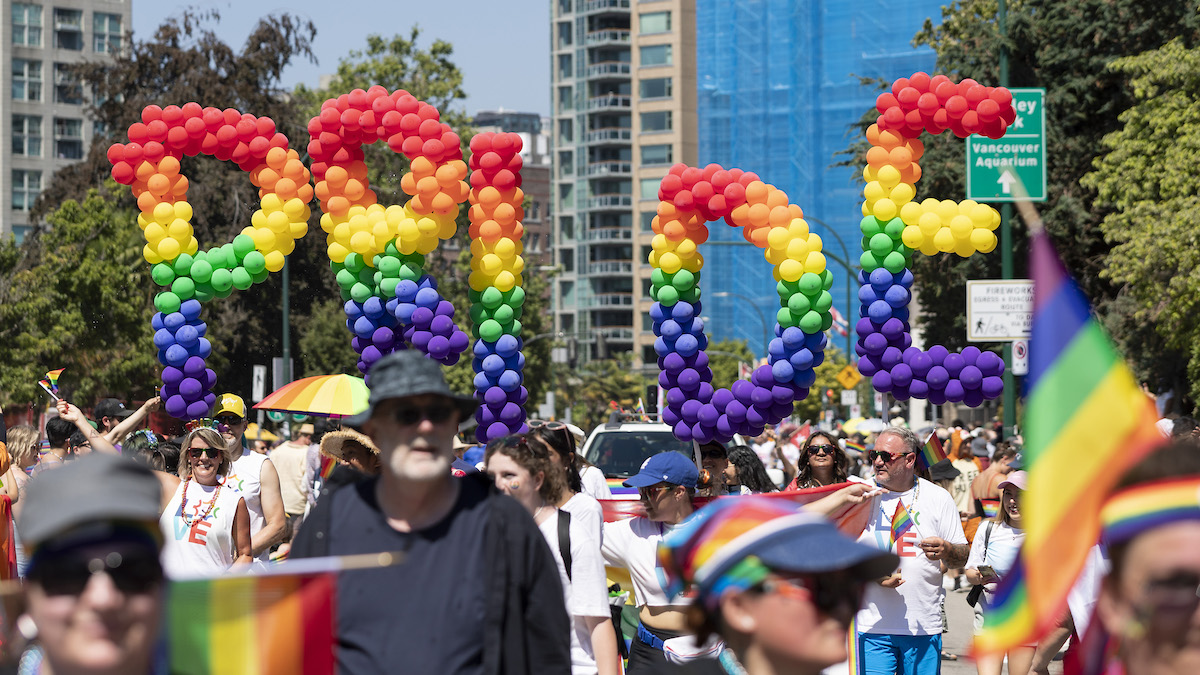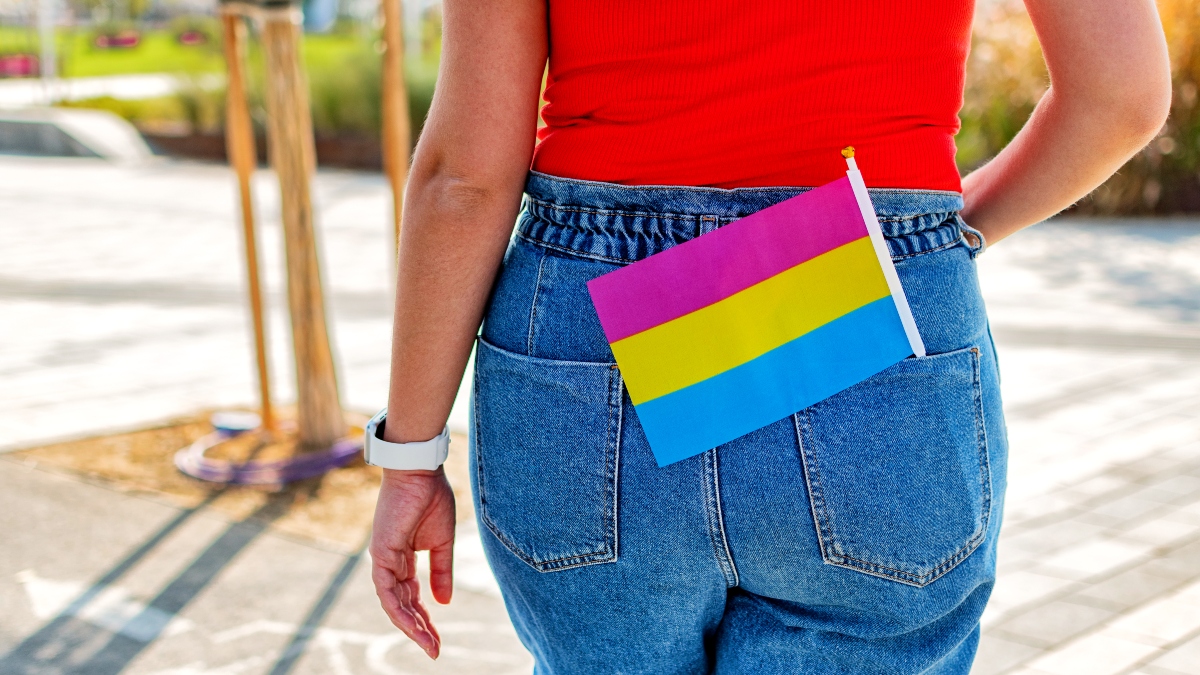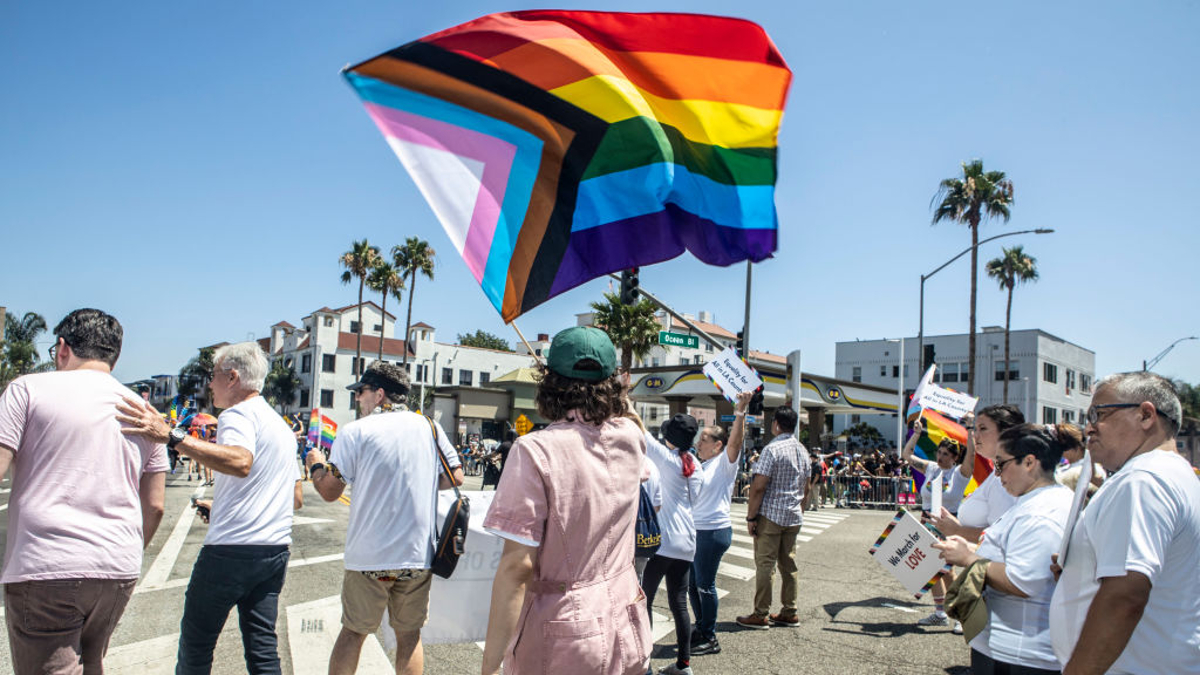Culture is a funny old thing. Despite homosexuality being clearly present in nature and throughout our own history (both recorded and evolutionary), in the past few centuries, something that was once so normalized that it wasn’t even seen as worthy of defining as “different” became increasingly frowned upon and criminalized. Gay men and women had to come up with ways to signal to each other so that they could form communities and relationships without being harassed. One symbol that has gained a foothold in popular culture is the notion of a gay ear, which allegedly signals someone’s sexuality by virtue of whatever ear they have pierced.
However, whether or not this was ever actually widely used in the global queer community is disputed, and nowadays the notion of it has its own horrible homophobic dog whistle attached. So what is the so-called history of the “gay ear?” And why has this idea bled out to popular culture, to the extent that kids in my school in the U.K. knew of the so-called meaning behind a certain ear being pierced before the internet was a massive thing? Read on to find out.
Which ear is the gay ear?

The simple answer is that the right ear is the so-called “gay ear.” However, the history of how this came to be is fraught with mistruths.
The practice of having a gay ear is said to have come about in the sixties and seventies, and propagated further in the eighties with the AIDS crisis and inhumane policies pushed by Conservatives in both the U.K. and U.S. (under Thatcher and Reagan, respectively). Prior to that, piercings had seen a slight drop in popularity, having been ubiquitous among the wealthier in many societies across the globe before then.
By the nineties, the notion of the “gay ear” was so heavily popularized that there was even a New York Times article about it (although, in classic NYT “enlightened” centrist fashion, the notion of piercings themselves are portrayed as a kind of bellwether of a declining society). From the piece:
Gay men followed, often wearing a single piece of jewelry in the right ear to indicate sexual preference. “In a world where you can’t dress flamboyantly, that’s a very discreet signal,” said David Menkes, who lives in New York and has had himself pierced in several places. But in the last few years, so many heterosexual men have begun wearing earrings — often in both ears — that the placement no longer suggests anything about sexual preference.
While it was interesting to see coverage of this in a so-called paper of record, the increased attention to the signal meant that a wealth of homophobic abuse would soon be tacked onto the practice. Ear piercings on the right side would lead to men being bullied, especially if they were younger. This accepted level of homophobia was driven by religious and conservative factions, but the lingering shadow of the AIDS crisis also meant that many alleged liberal types were also squeamish about their sexuality being questioned, especially if they were men (just see the television show Friends, which has a lesbian wedding as one of its main plot points, but also has a storyline in an episode where two male friends nap together and are ashamed by the implication).
How else was the gay ear shown in popular culture?

In a T Magazine article, the phrase “left is right, right is wrong,” was popularized, implying being gay was something shameful. Because a certain facet of men is incredibly fragile, this led to a swell of internet posts about the practice, mostly written by men anxious not to be seen as gay. However, this does seem to have been a nineties and early 2000s thing more than a constant throughout gay history, and nowadays especially, the notion is seen as archaic.
What myths and misconceptions are there around the gay ear?

Nowadays, piercings are so much more ubiquitous that the notion of a specific ear being “gay” isn’t really relevant. That, plus a much-needed push towards LGBTQ+ acceptance, and more of today’s youth being open about their sliding sexuality, means that the earring idea is more of a myth or legend than a reality (in Western countries, anyway).
However, an increasingly deranged, regressive, and power-hungry right-wing is bringing back LGBTQ+ bigotry under the guise of protecting kids (ironic, considering the number of famous Republicans who have gone to bat for child sex offenders, and even taken part in abuse themselves). Hopefully, we’ve moved past the days of needing secret signals, but if Ron DeSantis and his ilk have their way, this relative level of high acceptance for the community could be under threat.
Another myth about this practice is that it is globally recognized. The fact is, this idea was a fairly anglocentric one. Despite simmering homophobia in Western, English-speaking nations, these countries have a much better recent record on human rights than many in the global south, especially those that are overly religious (being gay is still illegal in many Sunni Muslim countries; gay marriage is illegal in Israel despite the country having a Pride parade; India is notoriously homophobic in places; and many ultra-Christian nations are also anti-gay). Therefore, members of the LGBTQ+ communities in these spaces have had to adapt, using their own clandestine codes and forming fragile communities to express themselves. While there is somewhat of a global gay culture (helped by the internet), on the whole, there is no monolithic global gay community, despite what some might want you to think.
To put a long story short: if you want an earring, get it wherever you think looks good. Anybody who cares nowadays is revealing themselves to be stuck in a worse time.

